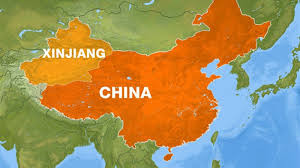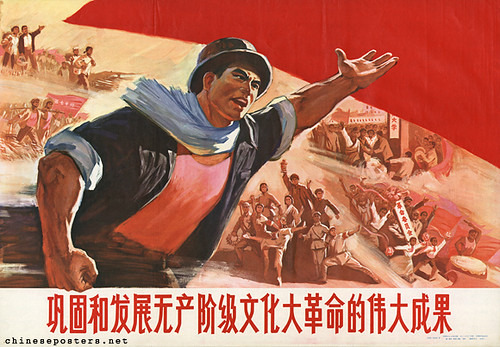Don't wanna be here? Send us removal request.
Link
youtube
Our plan is to make a stop motion animation about how to cook a plate of Kongpao Chicken, which is a famous Chinese food.
0 notes
Text
The interactions between human and computer is more direct than the interactions between human and human, or human and other creatures. Human beings have imagination and empathy helping us to understand others’ expressions when information is not clear enough, for example, we can still get the main idea of a command when some words are in wrong order or wrong grammar. Yet, computers can not get human’s commands unless you give a complete, exact and correct commands. However, everything has two sides. Ability of imagine helps making up the missing informations and building complete content in our minds with our logic. Because of the differences among human beings, misunderstandings and unexpected contradictions happen a lot, which will never happen to the interactions between human and computers. Computers will never misunderstand you when you give clear and correct commands.
0 notes
Text
Response to the Lecture
After listened to Hsin-Chien Huang’s lecture, I keep thinking about the relationship between technical skills and our works? Should we create works base on what we can do technically, or should we seek for collaborations to reach ideal project? The first plan might limits our thoughts and our style, and the latter one might coasts a lot of time and a lot of money. As a graduate student who will face this choice in quiet soon, it’s time to consider how to start my career as an artist after graduate. In my statement, I think that seeking for technical supports is a gradual process. Maybe I should make works with the familiar techniques at first, ask for a little extra technical assistant as the beginning, and getting more and more clear about what kind of effect can come true with what technology.
0 notes
Text
1.People rely on how faces work in optical media, which has achieved celebrities in today’s commercial society that author mentions as “image consumer culture”.
2.Initially, the ways of spectating images and creating images gave more possibilities to art forms. Such as Paul Smith hang up photographs of his works Artists Rifles and Action, and Joseph Scheer scanned bodies of moth instead of took photos.
3.Images gradually became a form to visualize data and information. We are surrounded by abundant media today, sometimes we get lost in this mass media world, and forget that even static images could convey emotions.
4. After digital technologies (programing) participated into images creation, more possibilities of image dealing were enabled. Artists can make more possibilities to images just by changing a number.
0 notes
Text
Anti-Anpathy 01




Uighur living status in China.
0 notes
Text
Art Viewing
“Mika Rottenberg is a contemporary Argentine-Israeli video artist who lives and works in New York City. Rottenberg is best known for her surreal video and installation work that often deals with the subject of female labor”.
Her exhibition Easypieces at The New Museum this time has several sections, five videos and six installations are shown in different rooms. My favorite piece among all video pieces is the one, has several men are sneezing and erupting rabbits out of their odd, reddish and long noses. I admire her talent of imagining, of relating sneezing, which is an ordinary action that happens almost everyday on everyone. I love it’s edition as well. In order to create the feeling of someone is sneezing out a rabbit, the scenes of sneezing people are directly cut to the scenes of rabbits tossed on a table. The exaggerate scenes convey humors and absurds to audiences.
Water drops keep dropping from ceiling to two pots on hearths is my favorite piece in installation parts. Water drops on two dry and high temperature pans, then become vapor with sounds of “Hiss”. Water dropping and turns into vapor when being heated are natural phenomenas. On the contrary, pans and hearths are industrial products, and water drys on pans is an unnatural phenomena, and even it’s a dangerous situation that we always don’t want to see nor let it happens. Mika Rottenberg says in the interview that she was attracted by the sound, and the process when water evaporates seems like magic and “seductive”. She combined natural and unnatural objects and actions together, left spectators a subtle and imaginative view.
0 notes
Text
Stacy Kranitz's work
“Actually rarely do I encounter a blog that’s both educative and entertaining, and let me let you know, you might have hit the nail on the head”.
“Is there some other organization or people defining Appalachia?”
“My objection lies in the fact that these photos are being portrayed as a COMPLETE view of Appalachia”.
Stacy Kranitz stayed Appalachia for three months to blend in and documented the local life. My understanding to her photos and reactions from local dwellers who see her works are, firstly, her photos mostly focused on poverty and uncivilized phenomenas. She revealed the weakest part of that region and life there. It’s just like you’ll get uncomfortable or even angry if someone point out your disadvantages clearly, and in a straight way. In other words, it’s like you always want to hide your weakness and your demons, and hope no one can find out. When someday someone find them and show to public in an “educative and entertaining” way, shames will become extremely indignation. Besides that, in objective sense, it’s true that not everyone from Appalachia lives in this situation. It’s hard to realize your bad, and harder to acknowledge it. No one wants to admit that poverty and uncivilized phenomenas are existing in the place they live in. Thus, some of them keep emphasize that “Are there backwards people living in these hills? Sure. I know some of them. But we are a blend of many different kinds of people --- the same as every other place. This photographer knows that sensationalism sells. No one wants to see what ‘everyday Appalachians’ look like.” They isolate themselves from Appalachian and stress that they are different. I appreciate you suggested us to read the comments, because these comments like a mirror that reveals people’s hypocrisy and weakness of humanity.
0 notes
Text
Reading Response to 9.5 Theses on Art and Class
Question:
In the middle part on page 45: “And so the final irony is that a man whose entire project was promoting interactivity and merging the avant-garde with popular art ended up decrying how his most celebrated creation was used almost as soon as it truly become popular art”.
Comments:
It’s quite hard to say whether it was art that is promoted by politics, or it was politics is described by art. People always say that people are able to spectate artworks purely from aspects of aesthetic and sensorial enjoyment only if they are living in rich and peace. If a person has nothing to eat or wear, he or she will never cares about art. During the turbulence period, works of art have more political than aesthetic functions. Take Chinese posters during the 60s to the 70s for instance. These style of posters or wall paintings were drawn



everywhere in China at that time, to respond and convey the main ideas from government. Actually, those posters have sense of aesthetic such as strokes, light contracts, special colors, perspective and textures that were ignored when public only took advantages from their political functions. We are able to talk about the art value of those posters today, because we are living in peaceful states and there’s no poverty nor violence happens to ourselves. This can also explains why contemporary artists keep seeking and digging topics and ideas, and enriching art forms, because there are less art movements and revolutions today, which means there are less chances for artists to declare their statements and show themselves.
Underlined sentences:
1. Entire 2nd paragraph.
2. Amid the fury and urgency of revolt, the most important questions are not artistic ones.
3. The art-historical celebrations of the touchstones of “political art” often has altogether too little to say about the complexities of the political questions in which artists were involved and, therefore, becomes a kind of static hero worship.
4. “Art into life,” a slogan meant to indicate art’s new and progressive engagement with practical problems to match the revolutionary moment.
5. Each (examples) at least illustrates an artist trying to work through how a very esoteric program might relate to the popular struggles of the day.
0 notes
Text
Concept for Literation 1-01
Sources

Mohamad Hafez

Mika Rottenberg

Guido van der Werve, the day I didn’t turn with the world
//////////////////////////////////////////////////////////////////////////////////////////////////////////
Content




0 notes
Text
Response to ‘F for Fake’
The movie talks about one of the most great forger, Elmyr Ferenc Huffman, in the 20th, and his personal biographer Clifford Irving. Like the actor’s line in the movie,“...the author of Fake!, a book about faker was himself a faker and the author of Fake! to end all fakes.” The most interesting thing is two fakers promoted each other to make them both well known.
The reason to explain why do fakes exist is public would love to see experts make mistakes. That causes most experts don’t want to know whether the works are fake or not, because those fakes can still make money from art market until someone point out that they are not real. Art market won’t disappear. If fake works are as good as real ones, why would we care about whether they are fake or not?
A interesting opinion in the movie is the relationship between fakers and experts. One thing is, experts exist because there are fakers make fakes. Will fakers disappear if there’s no more experts? In my opinion, fakers and experts will never disappear, because of humans’ mentality. People care about truth, that’s why we need experts to help seeking truth. The other thing is, who are the real experts when fakers can create fakes to deceive experts?
A horrible thought can’t get rid of my mind after watching this movie, which is a question that can we trust contemporary art market? Are paintings we see in museums real? Contemporary methods to estimate whether a work is real are conclusions that drawn from the research and data about other works of an artist. On account of undeveloped technology of early time, a lot of fakes had chance to enter art market. They’ve been sold again and again and maybe all over the world. That makes the research and data unreliable. How can we trust results which are drawn from unreliable research?
1 note
·
View note
Link
Vincent van Gogh is one of my favorite artist. I love his persist pursuit on his own style and his soul beyond the beautiful colors and strokes on his paintings. During the period when he was in Antwerp, he was drown to Japanese Ukiyo E style and appropriated it in some of his works. Mostly he used the themes, subject matters, perspective and color pattern from Japanese art into his own works, combine with his strong personal style to create some pieces of well known precious in art history.
0 notes
Photo

Presentation Outline
Introduce myself: what was my major and what kinds of works of art I made during college. (20 seconds)
Why did I create this piece of work? The inspiration’s resource.The research I did for making the work, how did combine my thoughts with the research and develop the work.(3 minutes)
The materials I used and processes of making.(1 minute)
Why I choose this piece of work to present.(40 seconds)
0 notes